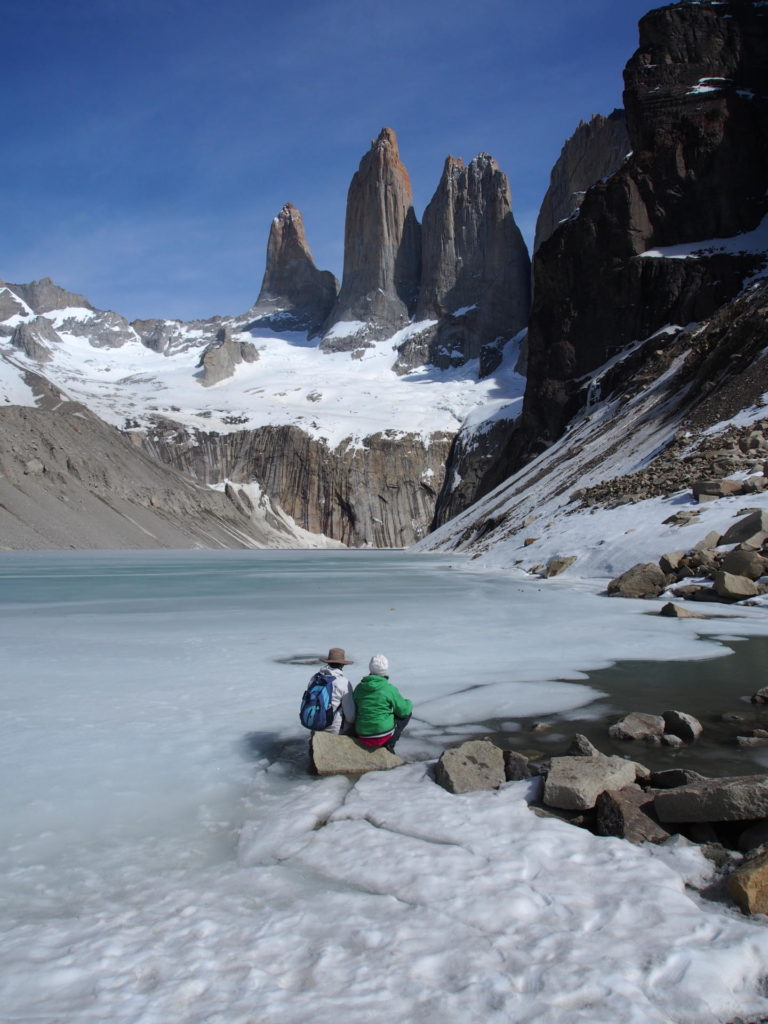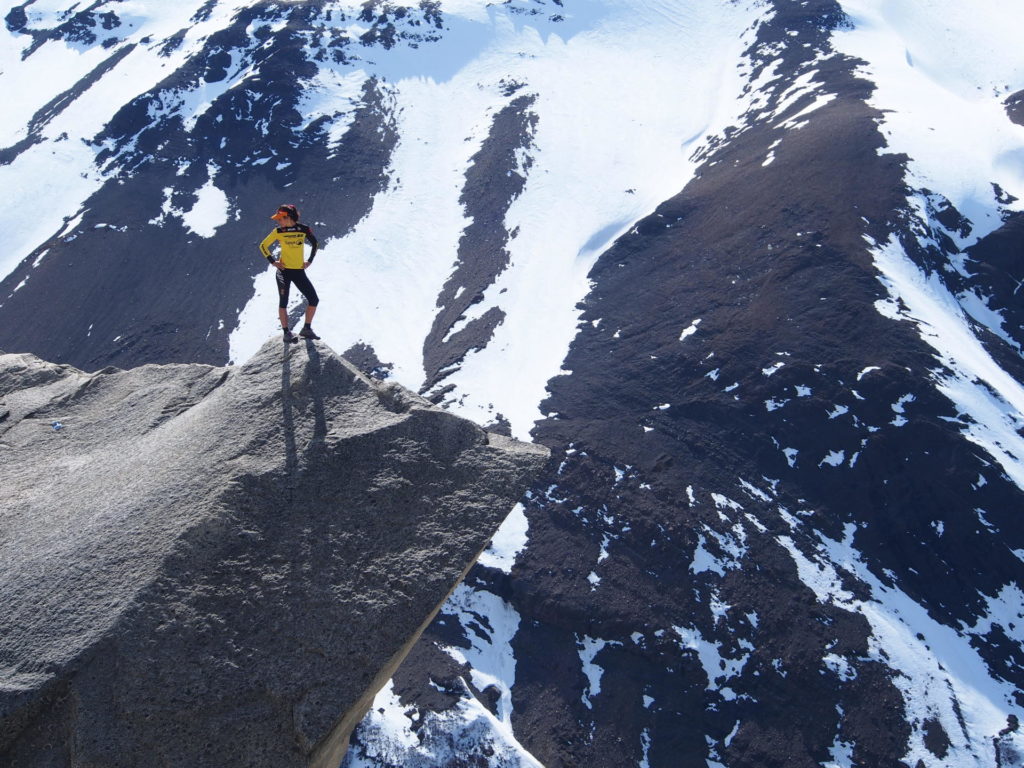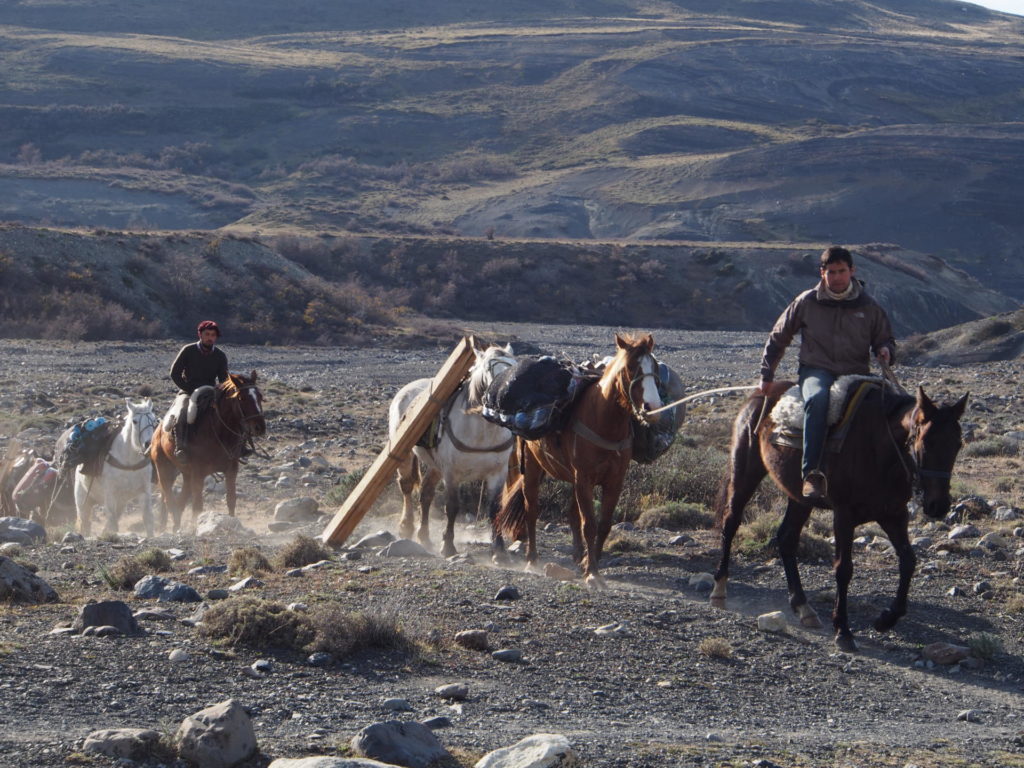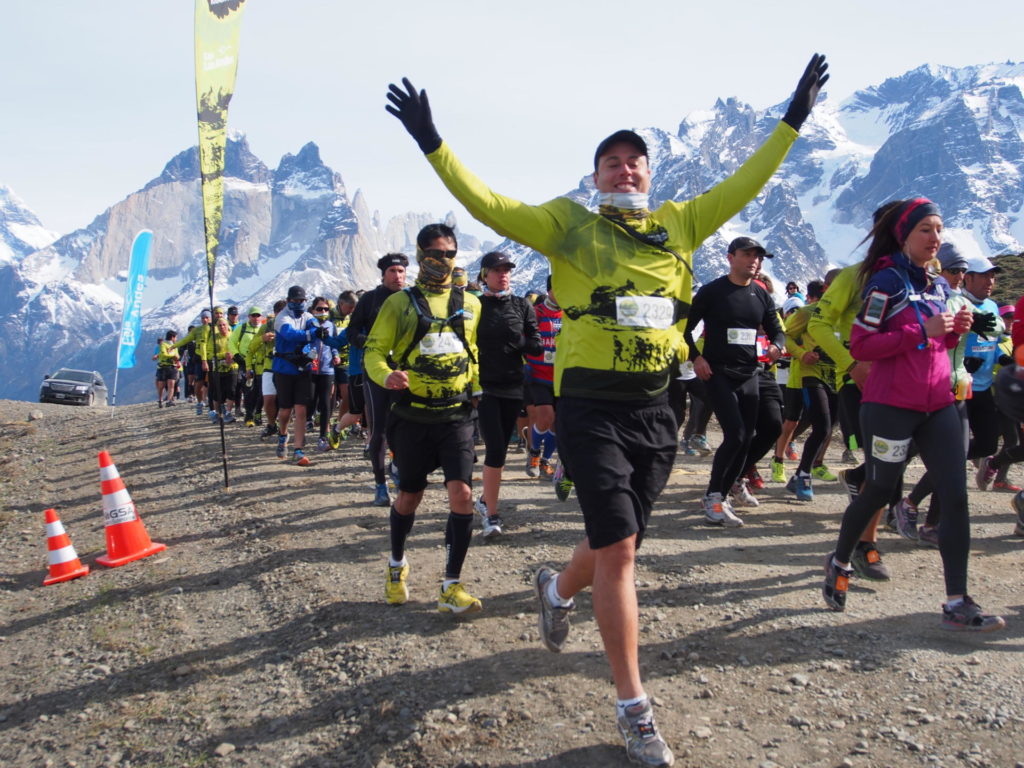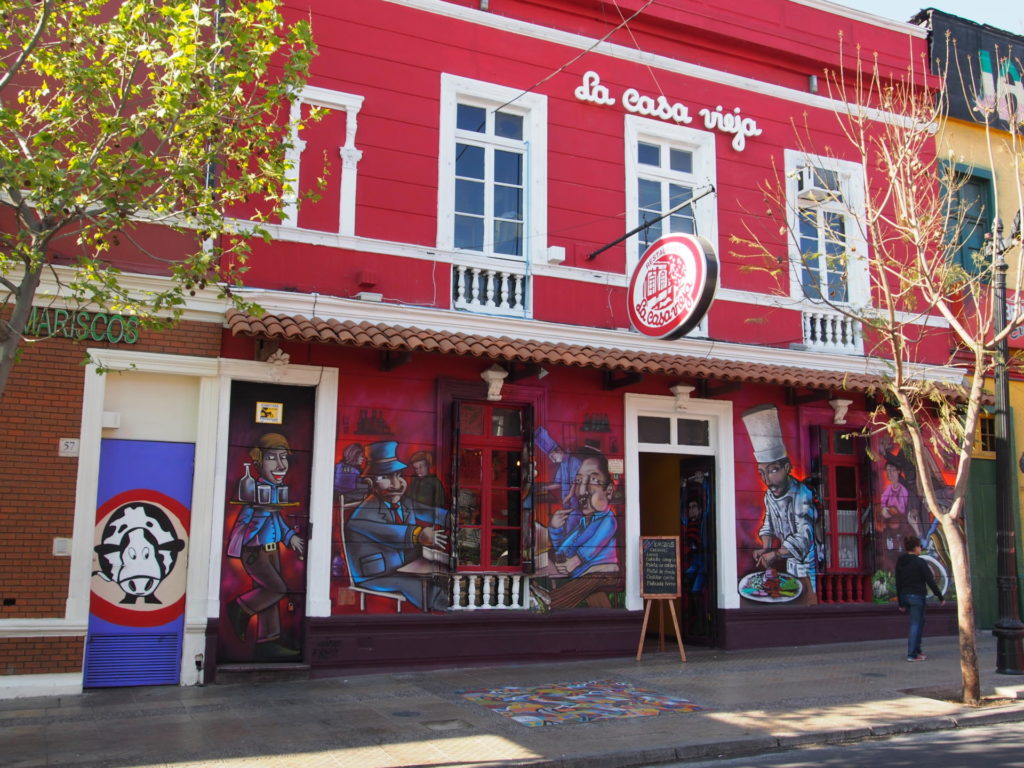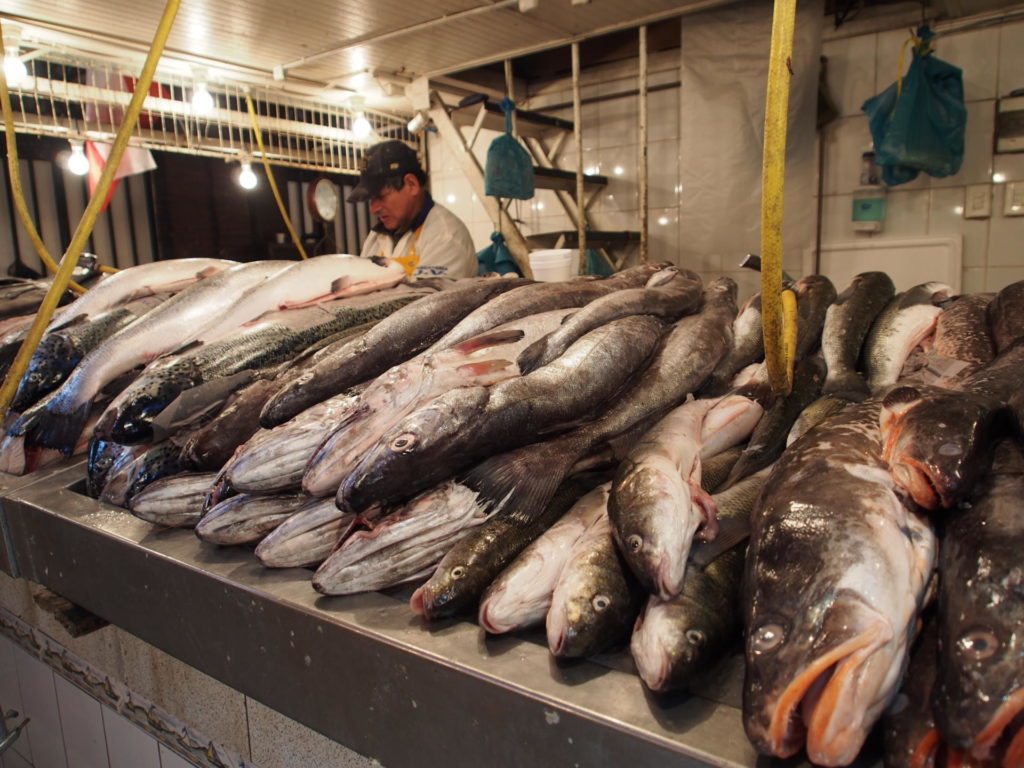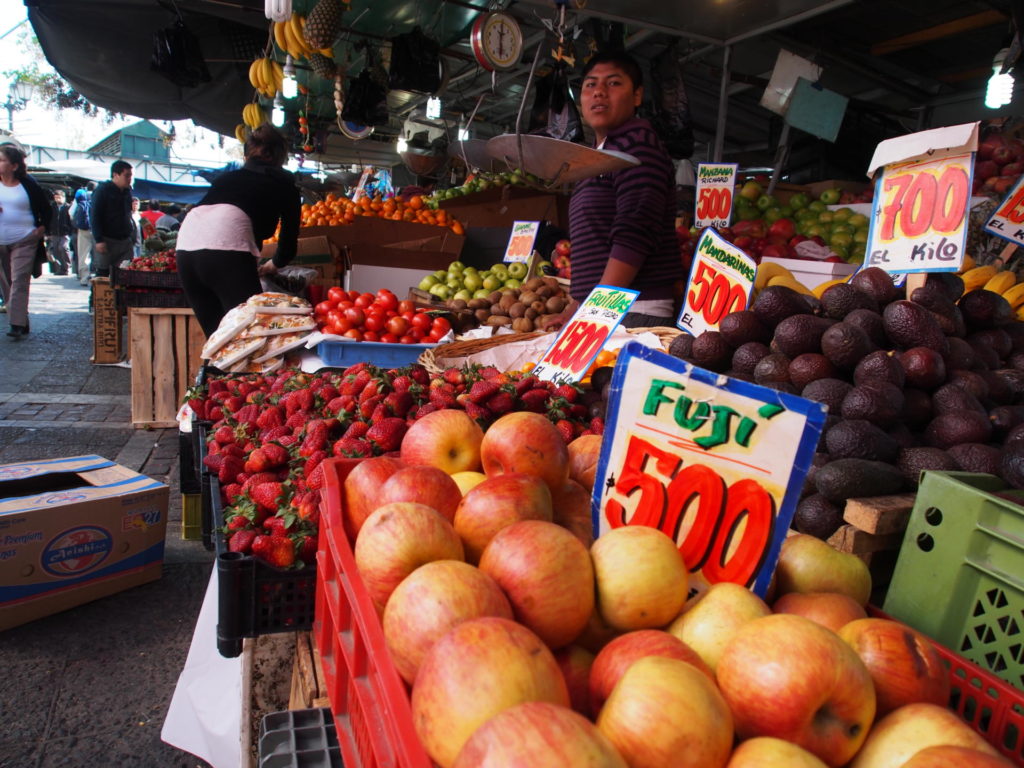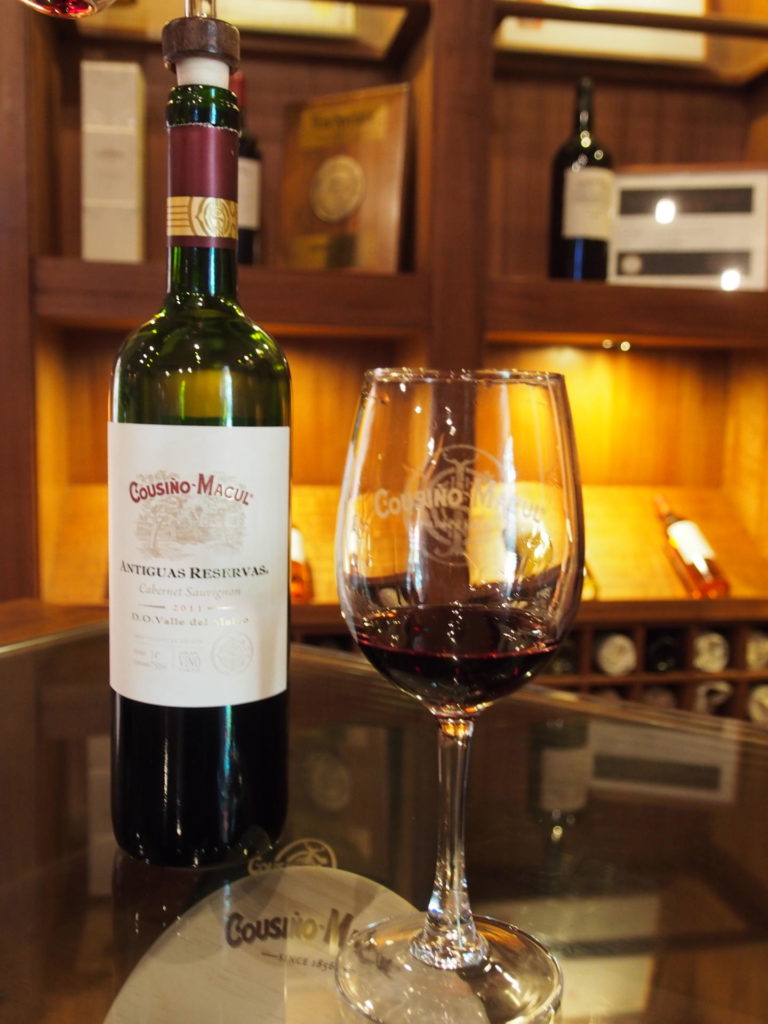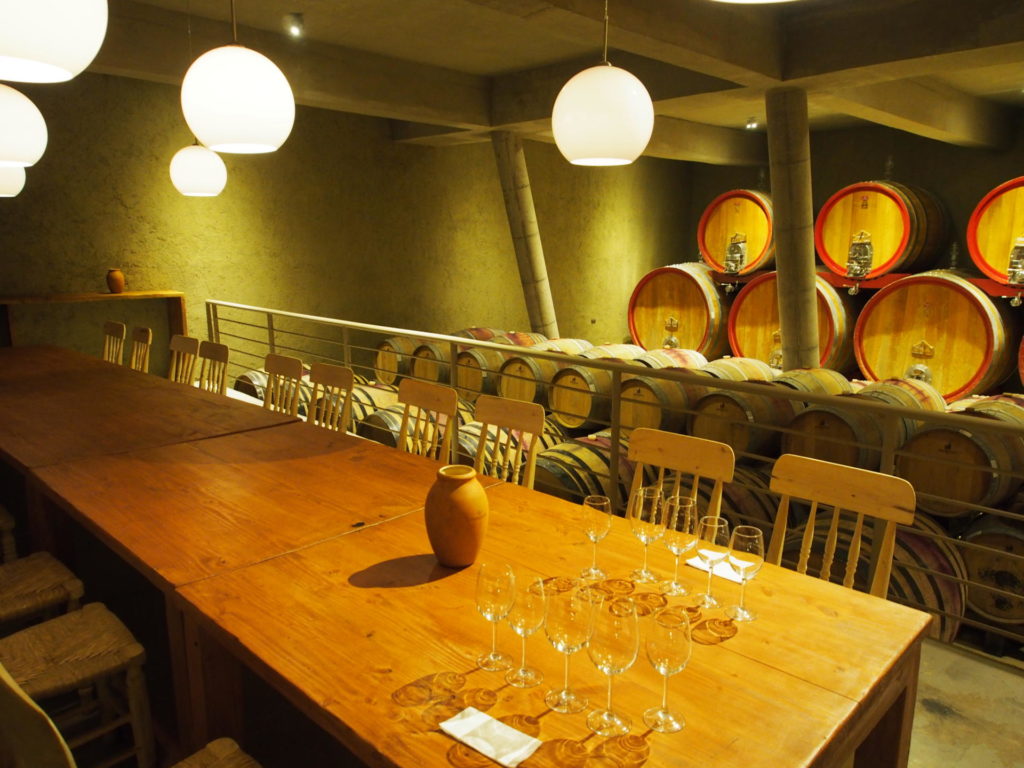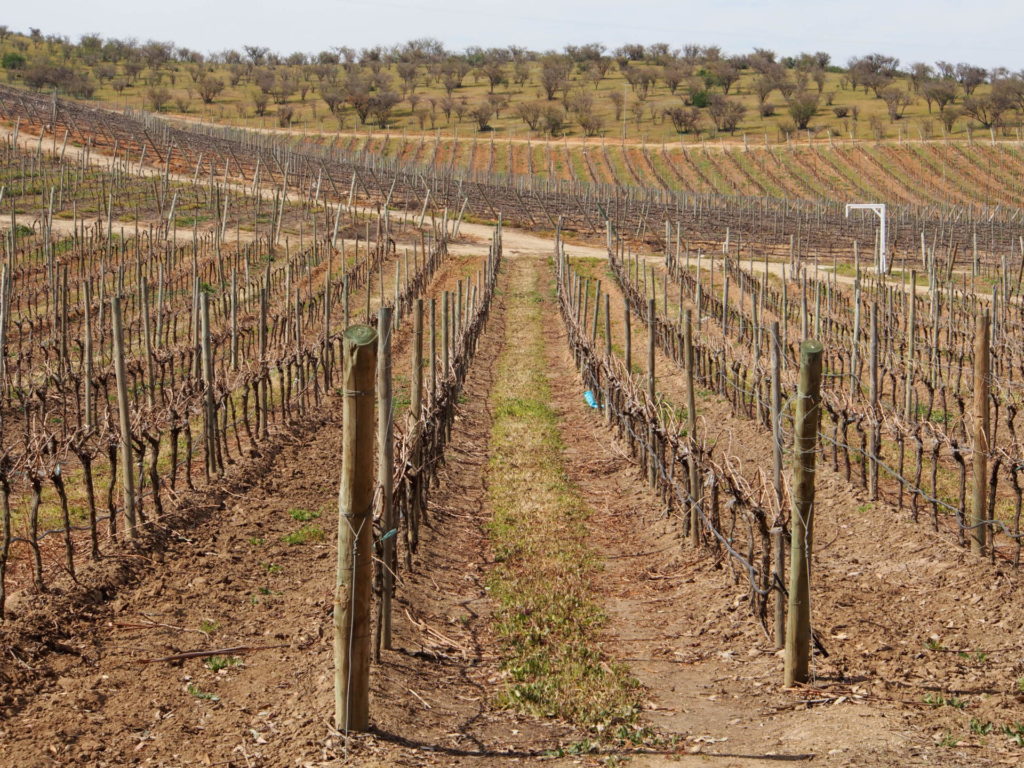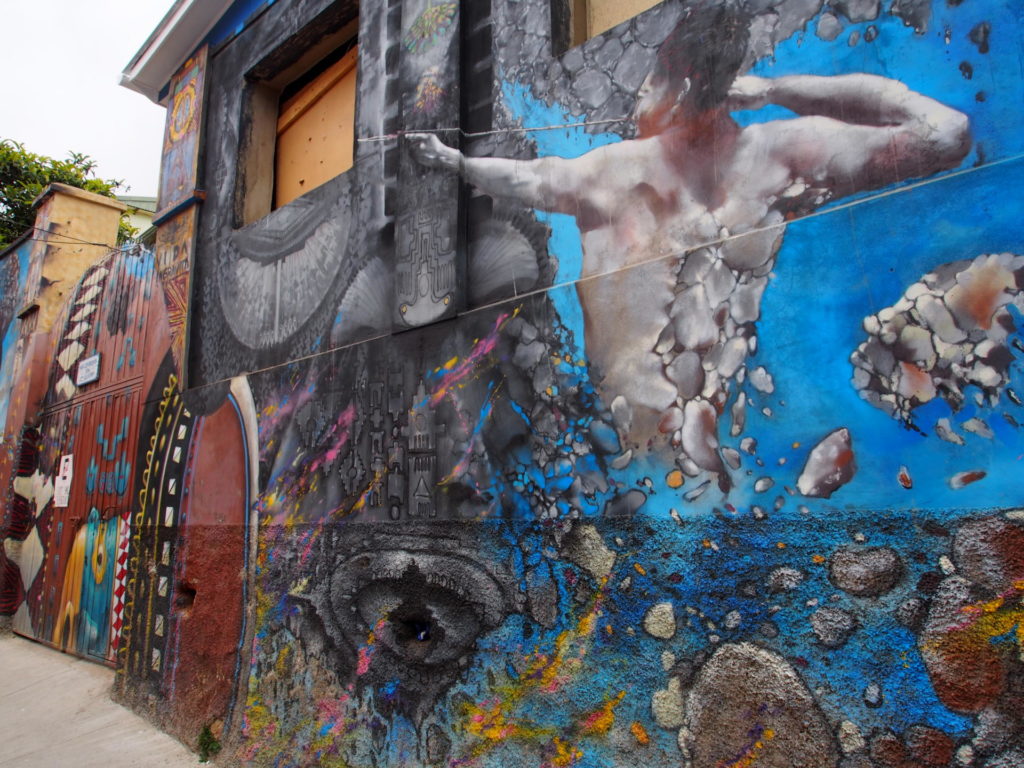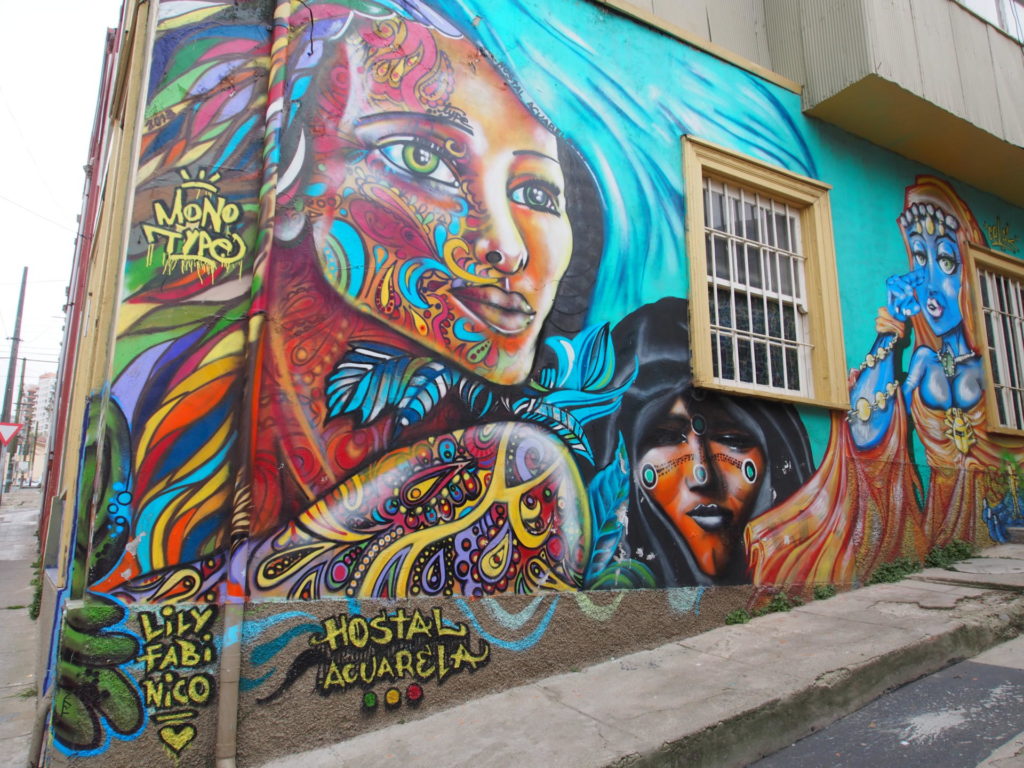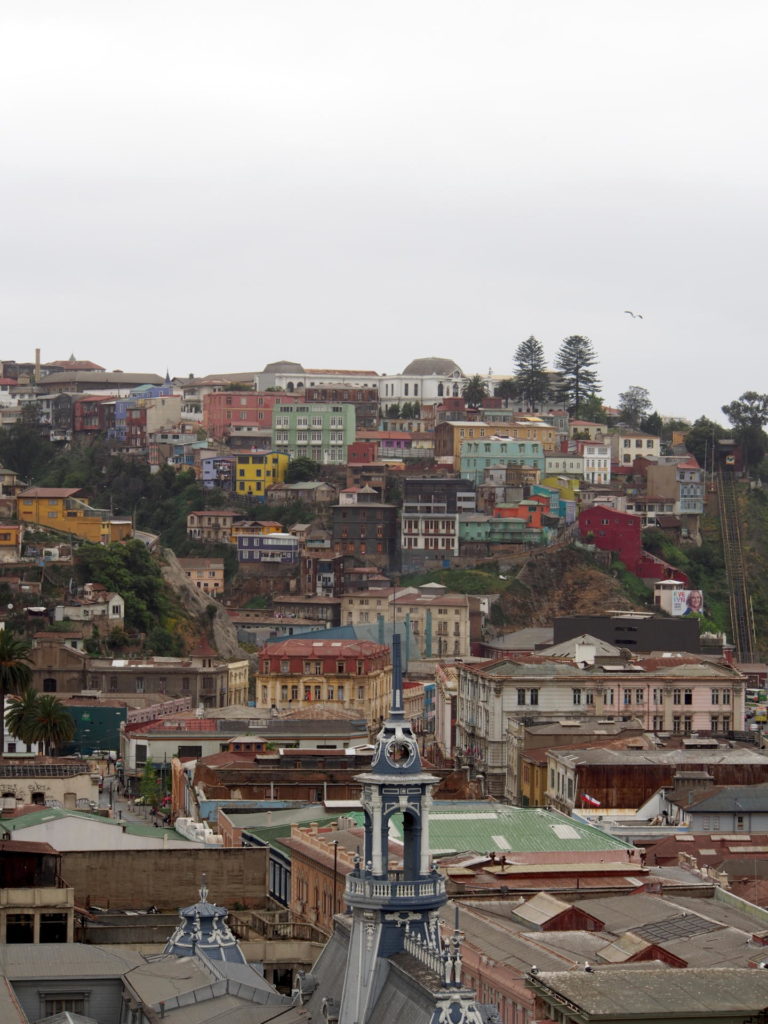Unfamiliar names on a travel itinerary are a beautiful thing. Summoning my best college Spanish, I read them aloud. “Puerto Montt, Punta Arenas, Puerto Natales…” Then I grabbed a map to see where I was going.

The plan was to travel from Japan to the tip of South America in time for the Patagonian International Marathon (PIM) and explore Torre del Paine National Park. I’d then head north to the wine country near Santiago and the Andes mountains, and then drop by Portland, Oregon, on my way back to Japan to attend the opening party for Montbell’s new Portland store.
I had a little more than a week to make it halfway around the world and back. First, I needed to get to Punta Arenas.
Patagonia
Punta Arenas is sometimes referred to as the southernmost city in the world. Ushuaia on Tierra del Fuego and Puerto Williams on Antarctica’s Isla Navarino are actually farther south, but Punta Arenas is by far the largest city. It used to be named “Magallanes,” after Ferdinand Magellan who first circumnavigated the earth, sailing between the Atlantic and Pacific oceans through the straits that still bear his name.
When I arrived at Punta Arenas Airport, I looked around for Krissy Moehl. Krissy was arriving late due to some terrible floods where she lives in Colorado. I also arrived the day before the race, so we arranged to meet at the airport and catch a ride into Torres del Paine National Park together.
Krissy had recently won the 2013 Ultra Trail Mt. Fuji, Japan’s most prestigious ultra-trail running event, and had been to Japan as a Patagonia (the clothing brand) ambassador. We chatted about Japan and whether she was returning to defend her UTMF title in 2014.
“I try not to do the same race two years in a row,” she said.
It was refreshing to hear an athlete be more interested in travel and new experiences than defending titles. I liked her immediately. She wasn’t the only pro running the 2nd Annual PIM. Ryan Sandes, Billy Barnett, Yassine Doubain and hometown favorites Veronica Bravo and Daniela Seyler Palamino would also participate, as would hundreds of runners of all levels.
The event, organized by Nomadas International Group, offers no prize money, and entry fees support conservation in the park. A tree is planted in the park for every participant as part of reforestation efforts.
A new, dusty Toyota pick-up pulled up, and our smiling driver, Cesar, leaned out the window to greet us. Soon we were cruising along the aptly named “La Ruta de Fin del Mundo” (The Highway to the End of the World) looking out at the Straits of Magellan.
We passed flamingos and Darwin’s Rhea, a flightless bird akin to an ostrich, and estancia (ranches) with herds of sheep grazing. Later, we’d see wild guanaco, the llama-like animals that thrive in the park and, although we didn’t see the Patagonian hog-nosed skunk, we were sure we passed a couple of them.
While Punta Arenas is the capital of the region, Puerto Natales, a two-and-a-half-hour drive northwest, is the gateway to the park. A burnt orange sun was sneaking behind Patagonian peaks, reflecting off the sound when we pulled into town.
Outdoor outfitters lined the streets renting mountain bikes, sea kayaks and trekking gear, while cheery voices spilled from restaurants. A couple hours later we arrived at our destination in the park, the Hotel Rio Serrano.
Dawn came quickly. A morning mist was clinging to the meadow while a curtain of clouds parted to reveal jagged peaks bathed in a soft purple glow. Then the curtain closed and the mountains were gone.
As I rolled out of bed, the bathroom door suddenly opened and a big guy in a Superman-like costume greeted me with a booming, “G’day mate!” Race day was off to an interesting start.
It turned out I was sharing a room with Trent Morrow, AKA “Marathon Man.” In January 2013, he embarked on a challenge to break the record for the most marathons in one calendar year. That day marked the 106th full marathon of the year for him.
He would equal the Guinness World Record (157) on Dec. 27, 2013, and the next day would break it. On Dec. 31, he would run his final race of 2013 and set the new world record at 161 marathons in a calendar year. Incredible.
Shortly after I arrived at the flats next to Lake Grey, the starting gun went off for the ultra-marathon. The scene, with icebergs floating in the glacier-fed lake as runners passed by, was surreal. The marathon, half-marathon and 10K would start at intervals at similarly stunning locations.
The atmosphere would get more festive as the sun rose higher in the sky, with runners dancing and stretching to electro-salsa beats during group warm-ups for their race.
Crowds gathered in front of Hotel Las Torres, at the base of Mt. Nieto, to greet runners as they crossed the finish line. Krissy shook off jet lag to be the first female ultra-runner across, followed by Chileans Daniela Seyler Palamino and Veronica Bravo. South African Ryan Sandes was the fastest man, with Americans Billy Barnett and Yassine Diboun next.
Runners continued to roll in as the supportive crowd cheered. Awards were handed out while everyone enjoyed a delicious Patagonian ranch-style barbecue. Pigs were spread across beds of coals, music played and Chilean wine flowed. It was a fitting end to an unforgettable day in Patagonia. This year’s race takes place on Sept. 27. Visit the website to register.
The following morning, the granite towers we’d been staring at since we arrived beckoned. A group of us leaving the next morning opted for the day-hike up to the towers. Those with more time chose one of the epic multi-day treks, either the “W” route, which takes about five days, or the full circle (8-9 days).
It’s hard to leave Patagonia without yearning for more time for activities around Puerto Natales, or island hopping in the Straits of Magellan, exploring the virgin forests of Tierra del Fuego or Antarctica beyond. I left thankful, vowing to return.
Santiago
Santiago is often overshadowed by flashier South American neighbors Buenos Aires and Rio de Janeiro. However, Chile’s capital, which sits between the Andes and beach resorts to the west, shouldn’t be overlooked. The city has a colonial charm and is filled with tree-lined streets, parks and interesting neighborhoods.
The people are generous and friendly. They speak openly about politics, including the dark Pinochet years, and take pride in the diverse country, their wine, food and artists. It is a multi-ethnic population with an estimated 70 percent of the population of European descent, 25 percent mestizos (Latin American of Spanish descent), and five percent Mapuche and other indigenous people.
Alfonso Canales and his wife Jose Maria live in Santiago, and Alfonso works at Antawaya, an outdoor recreation company in the nearby Andes. We met in Patagonia at the post-race barbecue. When they heard I was coming to Santiago, they offered to show me their city.
It’s not uncommon to get polite, yet often, empty invitations when traveling, but when I got to my hotel and checked e-mail, there was a message from Alfonso. They’d pick me up at 7 p.m., so I had better be ready.
The first stop was The Clinic, a Santiago institution. The people who run this popular restaurant also publish a satirical newspaper with the same name. The inspiration for the name came from The London Clinic in England where former Chilean dictator Augusto Pinochet was arrested in 1998, and the first newspaper was printed shortly after. The paper features cutting social and political satire, jokes as well as in-depth interviews and investigative work.
The first round of piscolas arrived shortly after we did. Pisco is a grape brandy produced in winemaking regions of Peru and Chile. Chilean wine is far superior, but I was told the best pisco comes from Peru. A piscola is exactly as it sounds, pisco and cola, and it was surprisingly good.
The Clinic seemed to be filled with conspiratorial conversations echoing off candle-lit walls. Ideas were being formed, plans hatched. Our plans, however, weren’t progressing very far. After an undetermined number of piscolas and hours of lively conversation, it was time to head home.
I spent the next morning exploring Santiago’s historic landmarks. I rented a bike and cycled riverside parks and up San Cristobal Hill to soak up the breathtaking view of the capital. In the afternoon, I arranged a cycling and wine-tasting tour of Cousiño Macul winery (est. 1856), the only 19th century winery still in the hands of the original family.
Grapes have been cultivated in the Macul area as far back as 1564, but in 1856 Matías Cousiño purchased the Macul estate with the sole purpose of producing wine. Six generations later, the family is still making great wine.
Santiago has expanded to the point of completely surrounding the Macul estate in the southeast of the city. The tour was more wine tasting than cycling, but I enjoyed the leisurely ride through the estate on our Chilean “mama–chari.” We pedaled through the vineyards, glasses clinking in bike baskets, Santiago city rising on one side and the Andes on the other.
This region of the Upper Maipo, where Cousiño Macul’s vineyards are located, is the closest wine-growing area to the foothills of the Andes. Cool air descends into the valley from the mountains, reducing temperatures, while snowmelt provides fresh water to irrigate the vineyards.
After parking the bikes, we strolled through dim corridors and subterranean enclaves. We ended in the main tasting room where we filled our glasses one last time with the wine of our choice. I opted for the Antiguas Reservas, an elegant Cabernet Sauvignon aged in French oak. I savored the wine and the six generations of care that went into it.
Next stop was Tesoros de Chile (Treasures of Chile), a restaurant just two blocks from Concha y Toro, the largest producer of wine in Latin America. Sergio, the caretaker, greeted us at the door.
A look around the country home revealed rooms full of antiques, art and objects telling the story of Chile’s people and natural history.
Our meal would be a gastronomical journey from north to south. First, a pisco sour to cleanse the palate, then pumpkin flat bread with tomato, cilantro and goat cheese accompanied by a tasty Maipo Valley merlot.
Next was a corn pie with meat and chicken, followed by fresh local fish topped with shrimp in a mild curry sauce. Finally a delicate flan with a coconut roasted pastry.
The visit ended after slowly climbing stairs to a room dedicated to Chile’s volcanic landscape, a reminder that great seafood was not all Chile and Japan had in common. Both countries are also hotbeds of seismic activity.
Casablanca
I scrapped plans to go snowboarding in the Andes on my last day. Conditions weren’t great, and a number of people had suggested I make a trip out to Valparaiso instead.
“Valpo,” as it is commonly called, is on the coast about 70 km. northwest of Santiago via a toll highway. A four-kilometer tunnel separates the metropolitan valley and the Curacaví Valley. Long before the Spaniards arrived, the Incas created sophisticated irrigation systems, and much of the vegetables people eat in Santiago are grown here.
As you emerge from a second tunnel, the Casablanca Valley unfolds beneath you. This coastal region is home to a number of boutique wineries, and there was one I wanted to check out on the way to Valpo.
Pablo Morandé, one of the most influential winemakers in Chile, opened Bodegas RE winery after a 40-year career with the big winemakers. His family came over from France nine generations ago, using clay vessels for wine-making.
The family kept the original clay pots and opened “RE” with the mission to re-create these ancestral wines using the old methods, hand-mashing grapes with a wood masher and burying the clay pots in the earth where they are naturally kept at the right temperature.
Sustainability is at the heart of the process, and they are proud the fermentation process and storage of the wine does not require expensive, contaminating equipment. They simply rely on the earth’s energy to do the job. Their patience is rewarded with some beautiful wines.
They also make balsamic vinegar, aged for 21 years, and their own liquor using all natural ingredients. Bodegas RE has regular tours and, if you are lucky, you may bump into Pablo or one of his three children who are also winemakers.
Valparaíso
Valparaíso is a fascinating place. Commercially, it is Chile’s main container and passenger port. Politically, it is where the National Congress meets – not Santiago – and Chile’s first civilian president, Manuel Montt, as well as the infamous Pinochet hail from here.
Culturally, a system of historic funicular cars still operates, taking people up the steep hillsides above the Pacific. In 2003, Valparaiso was declared a UNESCO World Heritage Site and, in the same year, Chilean Congress declared it “Chile’s Cultural Capital.” It is also home to the “School of Valparaíso,” the famous avant-garde architectural school, as well as El Mercurio de Valparaíso, the oldest Spanish-language newspaper in circulation in the world.
Valpo is one of the most colorful cities you will likely ever visit. Street artists have created amazing murals on buildings, streets, alleyways and stairways all over Valparaíso.
Pickpocket artists also roam the streets. Valpo has one of the highest unemployment rates in the country. The joke is, if you get something stolen in the morning, you can probably buy it back at the street market in the afternoon.
With a little convincing, my driver left me alone to explore the city. I took one of the 15 public funicular cars near Plaza Sotomayor to the top of the hill, then walked to La Sebastiana, the house of beloved writer Pablo Neruda, winner of the Nobel Prize for Literature in 1971.
Down the hill from Le Sebastiana, I met Camilo Quoroz, an artist commissioned to do a huge mural for a restaurant. I snapped a photo of him atop his ladder, then spent the next few hours getting lost in the labyrinth of steep, narrow streets covered with colorful creations.
After a day walking Valpo’s hills, I returned to Santiago and headed for the Bocanáriz Wine Bar in Centro. The manager had studied in New Zealand and was enthusiastic about wine and the burgeoning restaurant scene in Santiago.
After a tour of the impressive wine cellar, I sat in the open-air room as a carnival passed down the middle of the street. A clown on stilts leaned down and offered his hat. I tossed in some coins and received a bow in return, then the music faded away down the street. The circus always seemed to be in town in Santiago.
I made one last stop in the Bohemian district of Bayo Vista. Al fresco cafés lined the streets, and I sat down to soak up the remaining moments in the city before my flight. Dancers with colorful streamers performed for cars waiting at the stoplight. Some rolled down their windows and reached out their hands to show their appreciation.
Next to me, a middle-aged guy managed to make Bob Dylan sound cheerful on his harmonica. I chatted with the friendly waiter about the Lollapalooza tour coming to Santiago. His T-shirt read, “Que tengas un buen dia” (have a nice day), accompanied by a hand giving you the finger. Cheerful and sardonic with a touch of defiant humor, it summed up Santiago well.





